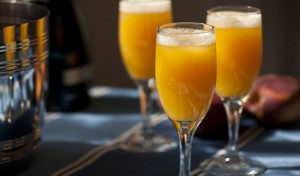
Ethnic Cocktails Are Mainstream
What’s for dinner? Today our choices are so vast that decisions don’t come easy. Our pantry is overflowing with items recently relegated to ethnic restaurants and dingy shops if seen at all. Take a moment to consider the long list of commonplace foods that were scarcely known a decade ago. Try to find a grocery or restaurant that doesn’t offer Balsamic vinegar. Sushi is now sold in the chiller at our local supermarkets. Traditional snack foods such as potato chips and nuts are now found with not so traditional flavors like wasabi, curry, or jalapeño & lime to appeal to newly internationalized palates.
The typical American menus of decades past are now packaged as ‘comfort food’ while our plates have become the ultimate expression of our melting pot culture. Logically and inevitably our drinks have followed suit. Sometimes the contents of the melting pot gets chilled, occasionally frothed, garnished with fresh fruit and served in a tall glass. Ethnic cocktails, much like fresh tomatillo salsa, baba ganoush, and Jackie Chan have fully assimilated seamlessly into the American fabric.
Not only do we embrace ethnic cocktails as our own we now insist that they are constructed with care, authenticity, and the very best ingredients; just like our food.
Let’s examine the margarita. This cocktail has become a classic and it can be found in nearly every restaurant bar regardless if there is the sweet smell of corn tortillas hanging in the air or not. The margarita offers the perfect parallel to the evolution of modern cooking and dining. This cocktail was once a novelty being more about show than substance. All you needed was a cheap, mixto Tequila, some brightly colored, pre-packaged sourmix, and triple sec. As long as the serving glass was catchy (or kitchy) and there was plenty of salt on the rim the customer was happy. Today’s margarita insists upon 100% blue agave Tequila, freshly squeezed limejuice, and a top-shelf orange liqueur. To do anything else would be akin to offering Parmesan cheese from a green can.
Some ethnic cocktails rose along side the growing popularity of their native cuisine. Two prime examples would be sangria and the caipirinha. Sangria became a mainstream cocktail along with the rise of Tapas restaurants while the caipirinha rode in on the coattails, or gauchos, of the Brazilian churrasco style steakhouse.
Like the margarita, the caipirinha and sangria are rather simple in design and rely upon the best ingredients. The sangria marries fresh fruit with fruity wine, orange liqueur, and a healthy dose of Spanish brandy. It’s a refreshing drink that is welcome with any cuisine. The caipirinha is a cocktail whose star is still on the rise. The cocktail’s base spirit is cachaça, which is very similar to Rum both in production and use. Cachaça is distilled from fermented sugar cane juice while most (but not all) rum is a distillate of fermented molasses. Cachaça is more popular and dare I say mainstream than ever. In 2008, for the first time, a cachaça was recognized as the top white spirit in the San Francisco World Spirits Competition (the nation’s leading annual spirits competition). The caipirinha is straightforward being built with a simple muddling of lime and sugar and topped with ice and a generous dose of cachaça.
You certainly couldn’t have an ethnic cocktail discussion without mentioning the mojito. You know that a cocktail, or a dish, has become conventional when the original has spawned dozens of variations; such is the case with the mojito. The mojito hails from the Caribbean, Cuba to be more precise, and it has become a standard summer and warm climate drink in the USA. Muddled mint, lime, and sugar topped with rum and a splash of soda cools the hottest of evenings. This classic cocktail has become standard fare at any bar.
Italian cuisine has been a major benefactor of the authenticity movement as so many staple food items and regional dishes have been popularized. The Bellini, a once popular cocktail, is making a comeback due in part to the rise of its base, Prosecco. The Bellini was invented by Giuseppe Cipriani, head bartender at Harry’s Bar in Venice (Italy). He is said to have created the name based on the cocktail’s unique color, which reminded Cipriani of a Saint’s robe in a painting, by the Venetian artist Giovanni Bellini. Through the years many deviations have become commonplace but now many are returning to the original recipe that utilizes just two ingredients: fresh white peach puree and Prosecco.
As Americans continue their culinary journey, here and abroad, this unique tapestry of flavors will continue to adopt new tastes. The lines that once separated domestic from ethnic or foreign have blurred resulting in a mélange of sensations that is far from homogenous but rather harmonious.
